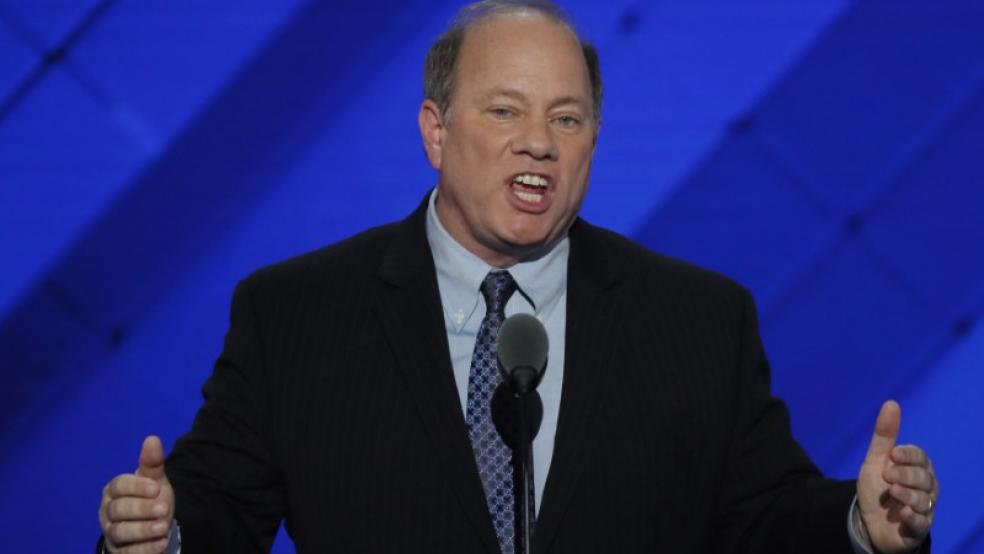As the presidential campaign enters a critical phase beginning with Monday night’s nationally televised debate, Hillary Clinton and Donald Trump continue to pile up new spending promises with little regard for their long-term fiscal implications.
Trump most recently vowed to provide parents with at least six weeks of paid maternity leave and tax deductions for childcare expenses, at a cost of about $500 billion over the coming decade.
Related: Fiscal Hawks: Why Is No One Talking About the Deficit?
But both he and Clinton have sought to outbid one another in appealing to key constituencies in the presidential campaign. Clinton has steadily raised the ante in supporting higher education, including free college tuition for many students from low and middle-income families.
She also promised to invest $275 billion in a new round of infrastructure projects, including new highways, bridges, waterways and broadband, and $25 billion more in seed money for a national infrastructure bank. Trump last month scoffed at her infrastructure proposal -- and vowed to spend at least twice that amount.
While Clinton and Trump have both made passing references to their concerns about the historic $19.5 trillion national debt, they have been largely unrestrained in proposing trillions of dollars of new spending.
In an update of its “Promises and Price Tags” running tally, the Committee for a Responsible Federal Budget reported on Thursday that Trump has actually out-promised Clinton on key spending initiatives.
Related: Big Deficits Loom as Candidates Pile on Spending and Tax Cuts
According to the new report, Trump has pledged over $2 trillion of increased spending on defense, veterans’ health care, child care tax benefits and preservation of Medicare coverage that was targeted for reduction under the Affordable Care Act.
Trump would spend at least $450 billion more than currently planned for the coming decade to make the U.S. military so strong, in his words, that “nobody’s gonna mess with us.” He has also promised to boost Department of Veterans Affairs spending by $500 billion in the coming decade, in part so that veterans could seek outside medical attention if they still encounter long lines at VA medical centers.
And while he has yet to specify how much he would spend on infrastructure, it would have to be at least $600 billion in order to double what his Democratic rival has proposed.
Clinton, meanwhile, would increase government spending by $1.65 trillion over the coming decade, according to the new tally. Topping a laundry list of nearly 60 separate proposals is $500 billion for higher education – including free community college tuition for many middle class and lower income families – and $250 billion worth of health care initiatives to build on Obamacare.
Related: CBO Warns Congressional Spending Is Driving Up the Deficit
Both Clinton and Trump make efforts to offset some of their proposed spending, either by substantially raising taxes on the wealthy, as Clinton favors, or attempting to reduce other spending by $1.2 trillion through cuts in non-defense discretionary spending, achieving additional Medicaid savings and dismantling the Affordable Care Act, as Trump has proposed.
Even so, both candidates would substantially add to the debt over the coming decade, according to the new report, with Clinton adding $200 billion and Trump adding a staggering $5.3 trillion, largely due to his proposed major tax cuts. Trump last week was obliged to greatly scale back his tax relief proposals, which previously threatened to drain the Treasury of $11 trillion and drew sharp rebukes from fiscal conservatives and tax analysts.
Trump’s fiscal proposals are built on fairly rosy supply-side assumptions that his major tax cuts for individuals and businesses and strategic spending initiatives will spark increased long-term economic growth that will help pay for the tax cuts. The real estate magnate contends that his proposals would lead to an annual economic growth rate of as much as 3.5 percent to 5 percent in the coming years – projections that many mainstream economists dismiss as unrealistic.
The Committee for a Responsible Federal Budget didn’t attempt to factor in Trump’s “dynamic scoring” in assessing the long-term impact of his plans. Instead, the non-partisan advocacy group took Trump and Clinton to task for refusing to face up to a mounting debt driven by the rising cost of Social Security, Medicare and other entitlement programs.
Related: Trump’s Tax Plan Would Cost Trillions, but the Numbers Are a Moving Target
“We are encouraged that Clinton continues to largely pay for her new spending and that Trump has made substantial improvements to his pan, including a less costly tax plan and new spending cuts,” the CRFB report states. “Unfortunately, neither candidate has presented a proposal to address our growing national debt and put it on a more sustainable path.”
“The bottom line is that we need a realistic plan from both candidates to bring the debt down to a sustainable level,” Maya MacGuineas, the president of the organization, said in an email.





